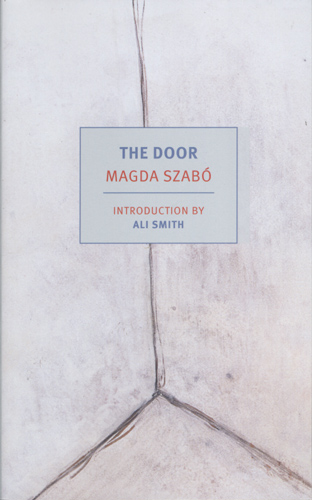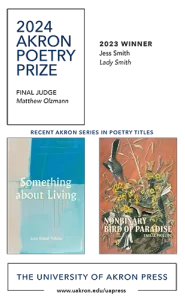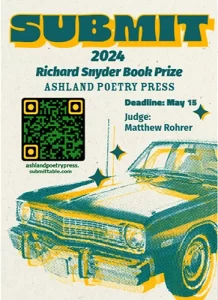The Door
Magda Szabó wrote this well-known Hungarian classic in 1987, and fortunately The New York Review of Books reissued it with an excellent introduction by Ali Smith. The novel is about the relationship between a young writer (the narrator) and her husband with their housecleaner Emerence, who proves to be so much more than that. The book could be viewed as autobiographical because the narrator, now a famous writer, is looking back on herself as young when she first met the old woman Emerence who announces, “I don’t wash just anyone’s dirty laundry.” She arrives at the apartment wearing, as she always does, a headscarf covering her hair and face like a veil. Hiding herself, the headscarf serves as the equivalent of Emerence’s locked door at her own villa. Magda Szabó wrote this well-known Hungarian classic in 1987, and fortunately The New York Review of Books reissued it with an excellent introduction by Ali Smith. The novel is about the relationship between a young writer (the narrator) and her husband with their housecleaner Emerence, who proves to be so much more than that. The book could be viewed as autobiographical because the narrator, now a famous writer, is looking back on herself as young when she first met the old woman Emerence who announces, “I don’t wash just anyone’s dirty laundry.” She arrives at the apartment wearing, as she always does, a headscarf covering her hair and face like a veil. Hiding herself, the headscarf serves as the equivalent of Emerence’s locked door at her own villa.
The main focus of the book is on Emerence, a force to be reckoned with, as Smith says:
Emerence is primitive, demanding, and without religion in a way that makes her somehow full of God’s wrath. There is “something superhuman” about the way she can work. She feeds all the neighborhood sick, sweeps all eleven doorsteps; nothing human and in need is alien to this woman who has hidden refugees across the board from Fascist to Communist. Nothing animal is alien to her either. She has a belief in animal purity (“They can’t inform on us, or tell lies about us”) as well as an ability to beat animals into near-senseless submission.
The novel is really a character study of a unique woman. According to the narrator, Emerence is “fearless, enchantingly and wickedly clever, brazenly impudent” and “a born Mephisto, utterly perverse” with “a sense of fellow feeling with anyone,” even the guilty, “a madwoman of mercy.”
The narrator has no name, maybe because Emerence:
didn’t address me directly until she was able to place me in her scheme of things, until she had a clear sense of who I was and what title was appropriate for me. And in this too she was right. Until your attitude to a person is clear, any such defining term will be inaccurate.
During the twenty years that Emerence works for the narrator, she is invariably right about her mistress’s self-centeredness, her being “puffed up,” more absorbed in her writing than even her husband. The narrator, on the other hand, has to learn about and from Emerence who often chooses to be silent and aloof, “having no wish to lay her heart on the line.” The narrator, fearful of Emerence’s anger, first thinks her insane. In finding out about the old woman little by little, the narrator corrects herself for wrongly thinking that Emerence stole from her previous Jewish mistress. They end up rescuing and sharing a male dog called Viola, in spite of the dog being male. Viola, extraordinarily sensitive and smart, is in tune with Emerence, in the same way all animals and children gravitate towards the old woman.
Mistress and servant, though they come from the same plain and therefore have the same “cursed natures,” have different values. Mistress is religious and Emerence anti-church. Similarly the narrator condemned Emerence as “bourgeois”—learning fine manners which “did nothing for her mental outlook” because she thought anyone “who did not handle tools” was “a parasite.” In her anti-intellectualism, “she glanced at our books for only as long as it took to dust them.” In her anti-politics stance, she terms the country’s violent crises “circuses.” Yet she takes to heart any criticism of the narrator’s works and is as fine an orator as any politician or “published her edict like the Pope.” Eventually most of Emerence’s strange behavior is explained, like naming the dog Viola. But it is the narrator who must change. She has to understand “how irrational, unpredictable is the attraction between people,” that affection can’t always be expressed calmly. She has to learn to live up to Emerence’s standards when the old woman lets her into her life. She has to be torn between professional success and personal failure. As she says in the beginning, “I killed Emerence.” This is ultimately a tale of guilt.
In a word, the narrator needs to care, as she does in this image of Emerence:
Once again her face changed. She was like someone standing in strong sunlight on a mountain top, looking back down on the valley from which she had emerged and trembling with the memory still in her bones of the length and nature of the road she had travelled, the glaciers and forded rivers, the weariness and danger, and conscious of how far she still had to go. There was also compassion in that face, a feeling of pity for all the poor people below, who knew only that the peaks were rosy in the twilight, but not the real meaning of the road itself.
There are few historical references, making the story feel that much more real, and almost no plot besides that of an evolving relationship between two people, one of whom is extraordinary as well as difficult. Despite the lack of plot, readers will still be kept interested, the portrait of Emerence and the narrator’s realizations making this book a powerful, satisfying read.





